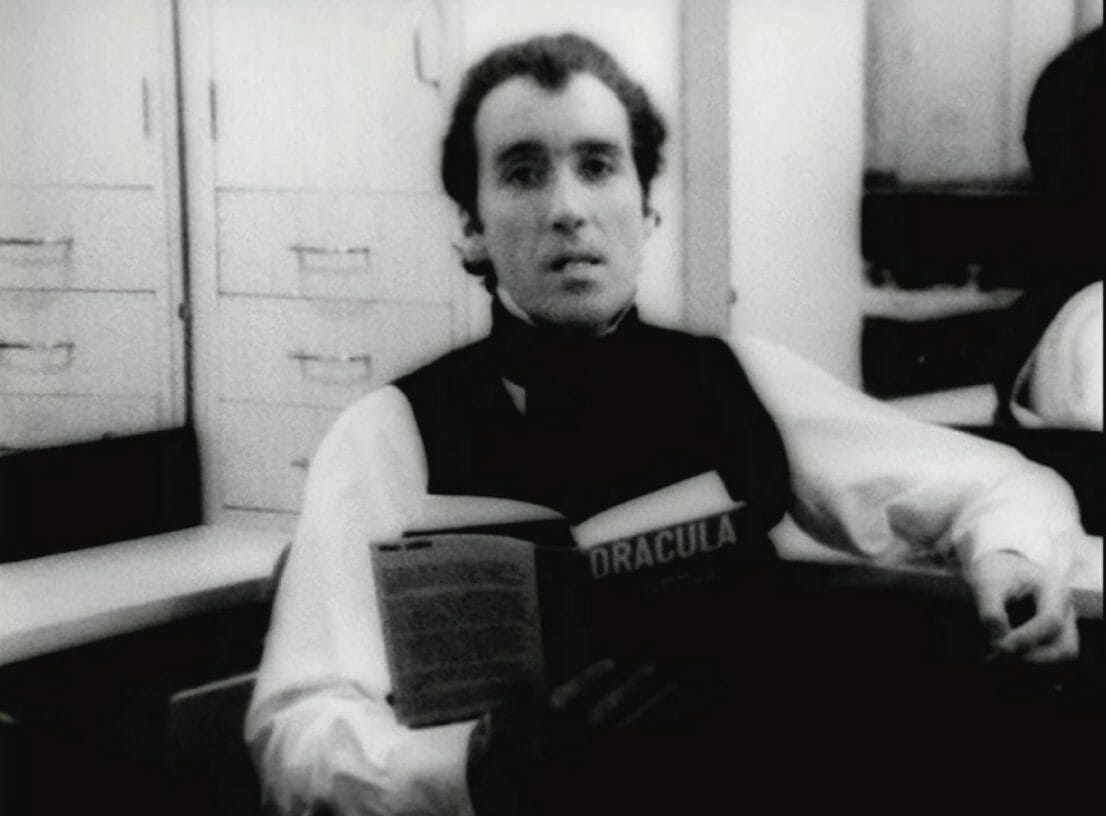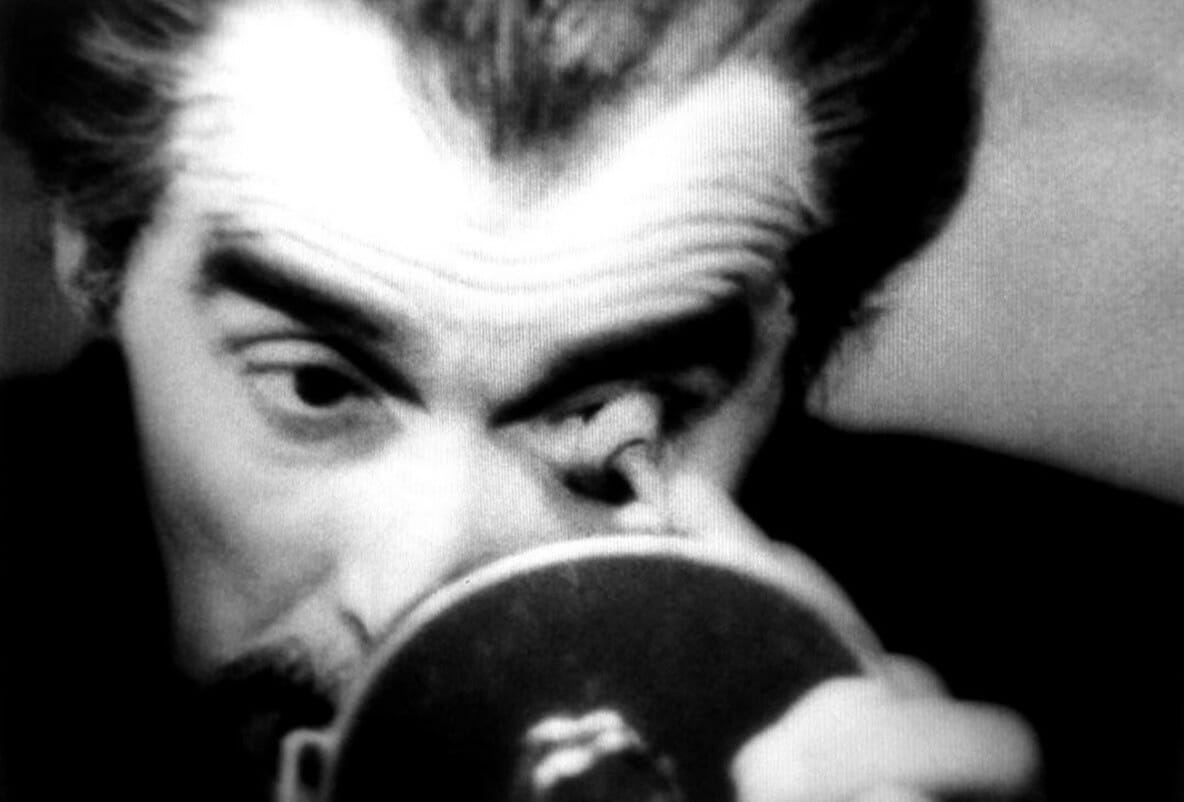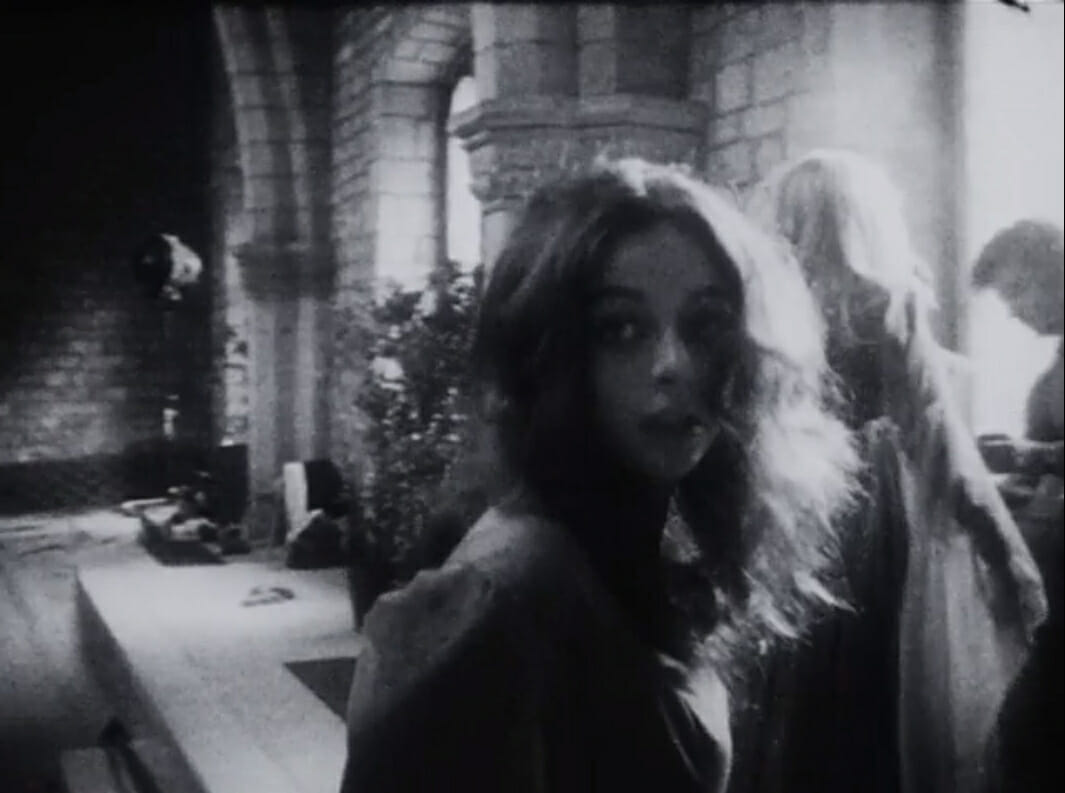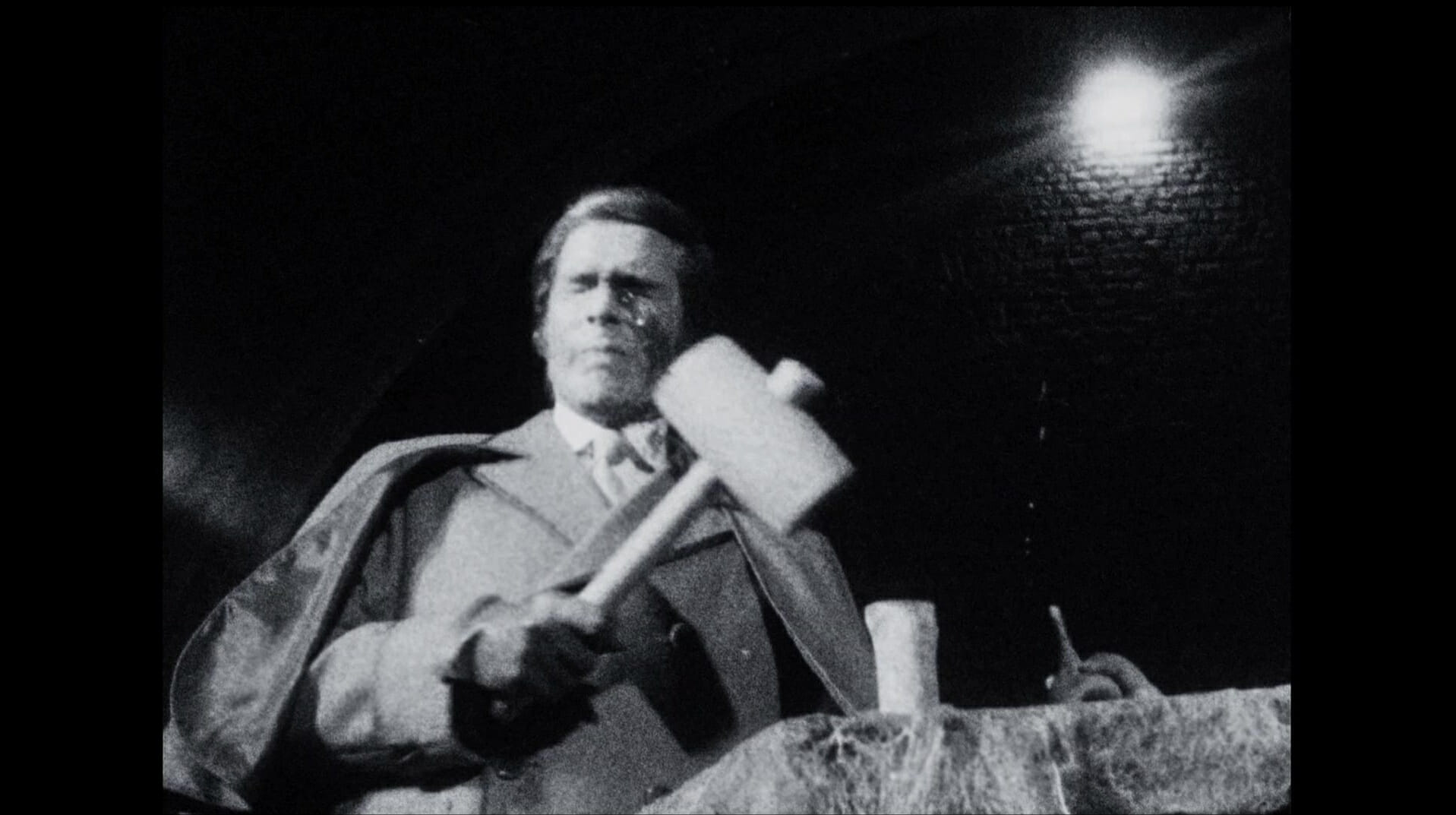When I think of behind-the-scenes featurettes, I naturally think about the countless such trifles I watched during the golden age of DVD, when seemingly every film of any interest at all was available in a “special edition” with a plethora of bonus features: audio commentaries, interviews trailers, making-of documentaries, and maybe some vintage behind-the-scenes footage that was taken while the movie in question was filming. It’s not a form that lends itself to artistic expression (no offense intended to featurette king Laurent Bouzereau or anyone else in his line) — or at least that’s what I believed before I saw Cuadecuc, Vampir directed by Pere Portabella.
Cuadecuc, Vampir is, technically speaking, a behind-the-scenes featurette, made during the filming of 1970’s Count Dracula, starring none other than Christopher Lee and directed by genre film god Jess Franco. Count Dracula is a somewhat stiff but adequate adaptation of Bram Stoker’s novel, it isn’t considered one of Lee’s best outings as Dracula, nor is it among the most revered films of Franco’s career, but it did give us Cuadecuc, Vampir, which has to rank among the most unusual screen Dracula’s of all time.
Portabella’s approach in shooting Cuadecuc, Vampir was to keep his 16mm camera running not just in between takes, but during them, effectively creating a sort of alternate-angle Count Dracula. The viewing experience is fascinating during these scenes, the actors are playing their parts just as they do in the Franco film, but seen from a different angle the illusion of these scenes is almost totally broken. It’s been compared to watching a play from backstage, but the magical thing about this film is that even though the illusion of Count Dracula is gone, a new illusion takes its place, and Cuadecuc, Vampir becomes yet another echo of the Dracula story, albeit a heavily distorted one.
The visual style of Cuadecuc, Vampir is high-contrast black-and-white, apparently intended to evoke early silent cinema, particularly Murnau’s Nosferatu. But where Murnau’s camera is always exactly where it’s supposed to be, Portabella captures all of the things they forbidin film school: crew members setting up shots, actors goofing off and pulling faces in between takes, sets being lit, and most delightfully, artificial cobwebs being mechanically placed. And yet, somehow, the story survives these numerous obstructions between the viewer and the illusion of reality, and this remains a film about Count Dracula’s confrontation with Jonathan Harker and Dr. Van Helsing, all the familiar story points intact and accounted for.
I’ve seen more movie versions of Dracula than I can count off-hand, and Cuadecuc, Vampir ranks as quite possibly the most singular of them all. It reminded me of Guy Maddin’s Dracula: Pages from a Virgin’s Diary, which also employs an antiquated visual style to evoke the early days of cinema in conjunction with an unusual retelling of Stoker’s plot, in this case one by the Royal Winnipeg Ballet. And of course, Francis Ford Coppola’s own Dracula movie also makes an explicit connection between Dracula and the mechanics of early film. Werner Herzog was haunted by Murnau’s Nosferatu when he created his own remake starring Klaus Kinski (who also stars in Count Dracula as Renfield, although if he appears in Cuadecuc, Vampir I missed him), shooting on many of the same locations and using some of the same effects that Murnau had used half a century earlier.
What is it about Dracula that has transfixed so much of film history like it has? It’s one of the most filmed stories of all time, which is partly explained by simple popularity, but a project like Cuadecuc, Vampir makes me wonder if there’s some deeper connection there. At the risk of saddling it with an obvious metaphor, Cuadecuc, Vampir could plausibly be described as a sort of vampire-film, a film that feeds off the blood and warmth of another and turns it into a pale, eerie shadow of itself. An undead film about an undead count.
Cuadecuc, Vampir was well received in avant-garde film circles when it was released. J. Hoberman’s New York Times review described it as “among the most highly regarded avant-garde films of the past half century,” and it has retained a small, cultish reputation in the decades since. Those decades have also enhanced its creepy power in an inevitably sad way, as all the major figures seen making Count Dracula, from Christopher Lee to Herbert Lom to Jess Franco himself, are now dead and buried, as are Emma Cohen and Maria Rohm. But in Cuadecuc, Vampir they, like Dracula himself, never rest. They can still be seen to walk around, play their roles, and say their lines, as in any of the other movies they appeared in over the course of their careers. But Cuadecuc, Vampir feels different, there’s an awareness and a puncturing of the quintessential illusion of cinema that in its own way feels as taboo as sleeping in a coffin or drinking blood.














